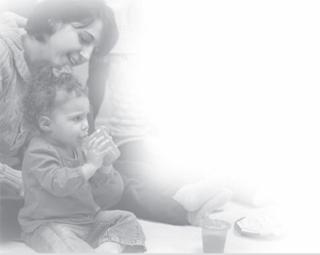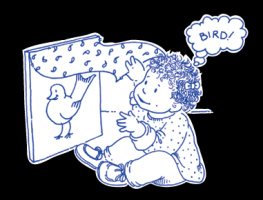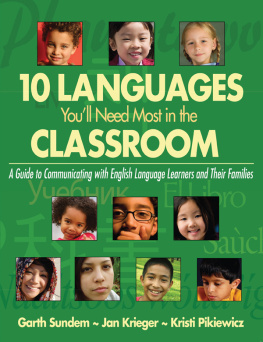Many Languages, Building Connections:
Supporting Infants and Toddlers
Who Are Dual Language Learners
by Karen Nemeth
Acknowledgment
Gratitude and admiration to Linda Groves Gillespie for her helpful input on this project and for sharing her infant/toddler magic over the years, and to my editor, Laura Laxton, for a great collaboration!
Also by Karen Nemeth:
Many Languages, One Classroom:
Teaching Dual and English Language Learners


2012 Karen Nemeth
Published by Gryphon House, Inc.
PO Box 10, Lewisville, NC 27023
800-638-0928; 877-638-7576 (fax)
Visit us on the web at www.gryphonhouse.com.
All rights reserved. No part of this publication may be reproduced or transmitted in any form or by any means, electronic or technical, including photocopy, recording, or any information storage or retrieval system, without prior written permission of the publisher. Printed at P.A. Hutchinson. Every effort has been made to locate copyright and permission information.
Cover photograph courtesy of iStock photo LP 2011. All rights reserved. iStockphoto and iStock are trademarks of iStockphoto LP. www.iStockphoto.com.
Library of Congress Cataloging-in-Publication Data
Nemeth, Karen N.
Many languages, building connections : supporting infants and toddlers who are dual language learners / Karen N. Nemeth.
p. cm.
ISBN 978-0-87659-443-8
1. English language--Study and teaching (Preschool)--United States--Foreign speakers. 2. Native language--Study and teaching (Preschool)--United States. 3. Second language acquisition--United States. 4. Education, Bilingual--United States. 5. Education, Preschool--United States. I. Title.
PE1128.A2N37355 2012
428.24--dc23
2011049903
BULK PURCHASE
Gryphon House books are available for special premiums and sales promotions as well as for fund-raising use. Special editions or book excerpts also can be created to specifications. For details, contact the Director of Marketing at Gryphon House.
DISCLAIMER
Gryphon House, Inc. cannot be held responsible for damage, mishap, or injury incurred during the use of or because of activities in this book. Appropriate and reasonable caution and adult supervision of children involved in activities and corresponding to the age and capability of each child involved is recommended at all times. Do not leave children unattended at any time. Observe safety and caution at all times.
Table of Contents
Why do you need this book?
 | What do you expect to learn from this book? What challenges are you facing that you hope will be addressed in this book? |
Thirteen-month-old Kayla said, Bah! and reached toward the basket. Her caregiver knew what she was asking for and handed Kayla the ball from the basket, repeating and expanding: Ball! You said ball! You want the ball? Here it is! Kayla bounced excitedly in her seat.
Meanwhile, 11-month-old Jos said, Po! and reached toward the basket. His caregiver responded with, Po. Isnt it cute you are trying to make little noises. She smiled and repeated, Po, then turned to play with Kayla and the ball. Jos got quiet and turned away. Unfortunately, his caregiver did not realize he, too, was trying to say the word ball but in his home language. If she had known that pelota meant ball, she might have responded differently.

Caring for someone elses baby is an awesome and wonderful responsibility. Getting to know each tiny new person with his unique characteristics and personality, his likes and dislikes, and his family and culture is fascinating. Caregivers today are witnessing rapidly increasing diversity, which brings a critical question into focus: What is the best way to care for an infant or toddler who comes from a language background different from your own?
So much has been written about language education, ESL (English as a second language), and bilingual education for K12 teachers, and weve seen a bloom of books written about teaching preschool children who are dual language learners. However, none of these resources gets to the heart of what infant and toddler caregivers want and need to know. The goal of this book is to help any adult caring for a baby or toddler to feel confident that he knows how language develops, how cultural differences can come into play, and how to assess an individual childs situation to provide appropriate supports.
The 2010 U.S. Census estimates that about 25 percent of children younger than the age of six are born to immigrant families, making this the fastest-growing segment of our population (Fortuny, Hernandez, and Chaudry, 2010). Infants and toddlers whose families speak many different languages are appearing in all kinds of early care and learning settings in growing numbers. These infants and toddlers may receive care at home, in someone elses home, or in a center. They may have large extended families or live with just one parent. They may live in wealthy homes full of expensive toys and furnishings or in homes with little to offer the growing mind of a young child. They may be seen by doctors, dentists, therapists, social workers, and nurses, or they may be in situations with few services. They may be thriving in secure homes or struggling in stressful environments. They may be growing up with two languages or more.
The more we learn about how important support for the home language and culture is to building a strong foundation for literacy, self-esteem, and relationships, the more we realize this support must extend to all children, even the very youngest. A rich cultural and linguistic heritage provides many advantages. Parents and caregivers need to share a common understanding and vision for raising young children whose home language is not English.
We know that language is a vital component of early experiences well before a child can say his first word. We cannot afford to wait until children get to elementary school to start addressing the development of their home languages and their learning of English. Yet, most professional-development programs for infant/toddler teachers do not introduce strategies for supporting linguistic and cultural differences for the youngest children. Nor do most programs for ESL and general-education teachers address the care of infants and toddlers from different language and cultural backgrounds. In this book, both professors and professional-development providers will find ways to enhance their classes so they can better prepare caregivers for the diverse reality they will encounter in their work.
In addition, home visitors, family child-care monitors, program directors, trainers, nannies, consultants, therapists, early intervention specialists, pediatricians, social workers, and other early childhood professionals need knowledge and strategies to support the development of babies in bilingual environments with unique cultural traditions. All adults who have responsibilities for children younger than the age of three can help form nurturing communities to enhance the infants and toddlers experiences, including their experiences with culture and language.







